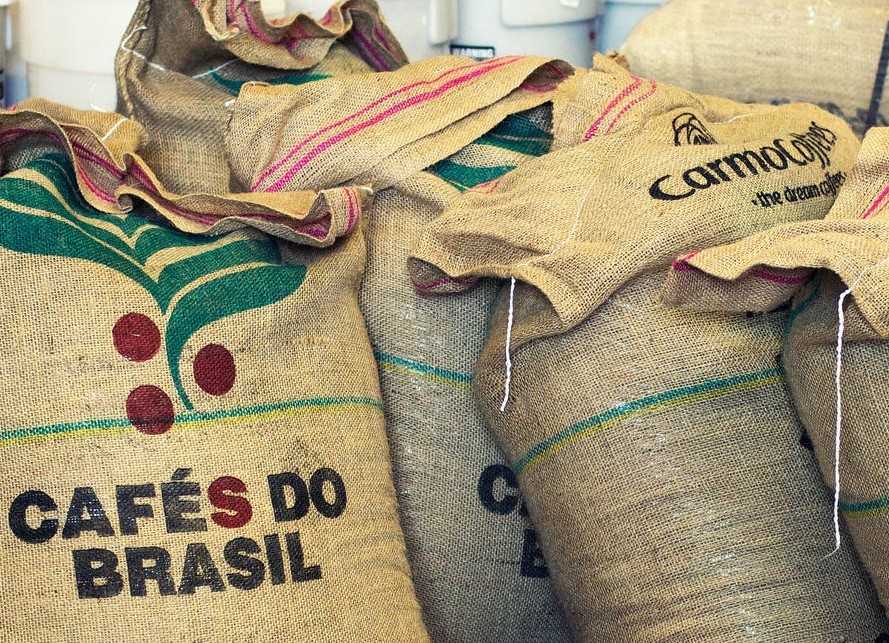Record exports from Brazil weigh heavy on the Market. Coffee exports from Brazil reached a record high of 36.8 million bags in crop year 2014/15 (April to March), fuelled by domestic stocks and encouraged by a depreciation in the exchange rate. Production in crop year 2015/16 is currently estimated by Conab as roughly unchanged at between 44.1 and 46.6 million bags.
However, with Brazil’s domestic consumption at around 21 million bags, export availability is going to be significantly reduced over the next year.
Overall, prices remained low in April 2015 despite a slight increase over March, as consumer stocks remain relatively well supplied.
Furthermore, several recent reports about the upcoming Brazilian crop have suggested that the damage might not be as severe as previously expected.
The monthly average of the ICO composite indicator settled 1.6% higher than March on 129.02 US cents/lb, but coffee prices remain at generally low levels.
The daily price showed no clear trend over the course of the month, ranging from a high of 132.46 cents to a low of 126.05.
In terms of the groups, the three Arabica price indicators all registered modest increases, with Colombian Milds, Other Milds and Brazilian Naturals up 1.8%, 2.0% and 2.4% respectively.
The monthly average of Robustas, on the other hand, fell by 0.1% to its lowest level in fifteen months. As a result, the arbitrage between Arabica on the New York futures market and Robusta on the London market has widened to just under 60 cents.
Total coffee exports in March 2015 came to just under 10 million bags, 2.6% less than March 2014. This brings exports for the first half of coffee year 2014/15 (October to March) to 53.1 million bags, down 3.3% compared to the same period in 2013/14.
In terms of individual countries, while exports from Brazil and Colombia for October to March have increased year-on-year, shipments from Vietnam have fallen to a four-year low, while Indonesia is down by a third compared to last year.
Looking at the Arabica/Robusta breakdown, the reduction in Robusta availability from Vietnam and Indonesia has been partially compensated by the increase from Brazil. Overall, Arabica exports were down 4.6% while Robustas were 1.1% lower.
Indeed, with this export data for March now available, it can be seen that Brazil registered a record volume of exports in crop year 2014/15 (April to March) of 36.8 million bags.
This volume is 12.4% higher than the 32.7 million exported the previous year, and is all the more remarkable given the lower production volume due to the drought in early 2014.
According to Conab, the Brazilian government agency responsible for crop forecasts, coffee production in 2014/15 came to 45.3 million bags, its lowest level in three years. With domestic consumption of around 21 million bags, this would suggest that significant volumes of domestic stocks have been used to supply the market over the last year, which has been made possible by the large production levels of 50.8 and 49.2 million bags recorded in crop years 2012/13 and 2013/14.
These record export levels have been further encouraged by the depreciation of the Brazilian real against the US dollar.
The real weakened considerably between October 2014 and March 2015, before recovering somewhat in April. This depreciation increases the return in local currency for Brazilian exporters selling coffee priced in dollars, thereby creating an incentive to release stocks to the international market.
Looking ahead to crop year 2015/16, which began in April, production is currently estimated by Conab at between 44.1 and 46.6 million bags; assuming that domestic consumption stays in the region of 21 million bags, this would only give an exportable production availability of just 24 million bags or so.
As a result, it is likely that Brazilian exports over the next 12 months are going to be significantly lower.
The effect this will have on the market is still a matter of some debate, as these record export volumes have ensured that consumer stocks are currently well supplied.
At the end of December 2014, stocks in importing countries reached 22 million bags, compared to 18.8 million in December 2013. This gives a relatively comfortable availability of just over 11 weeks, which is contributing to the ongoing bearish market sentiment.
Download the full Market Report in PDF format here.


















